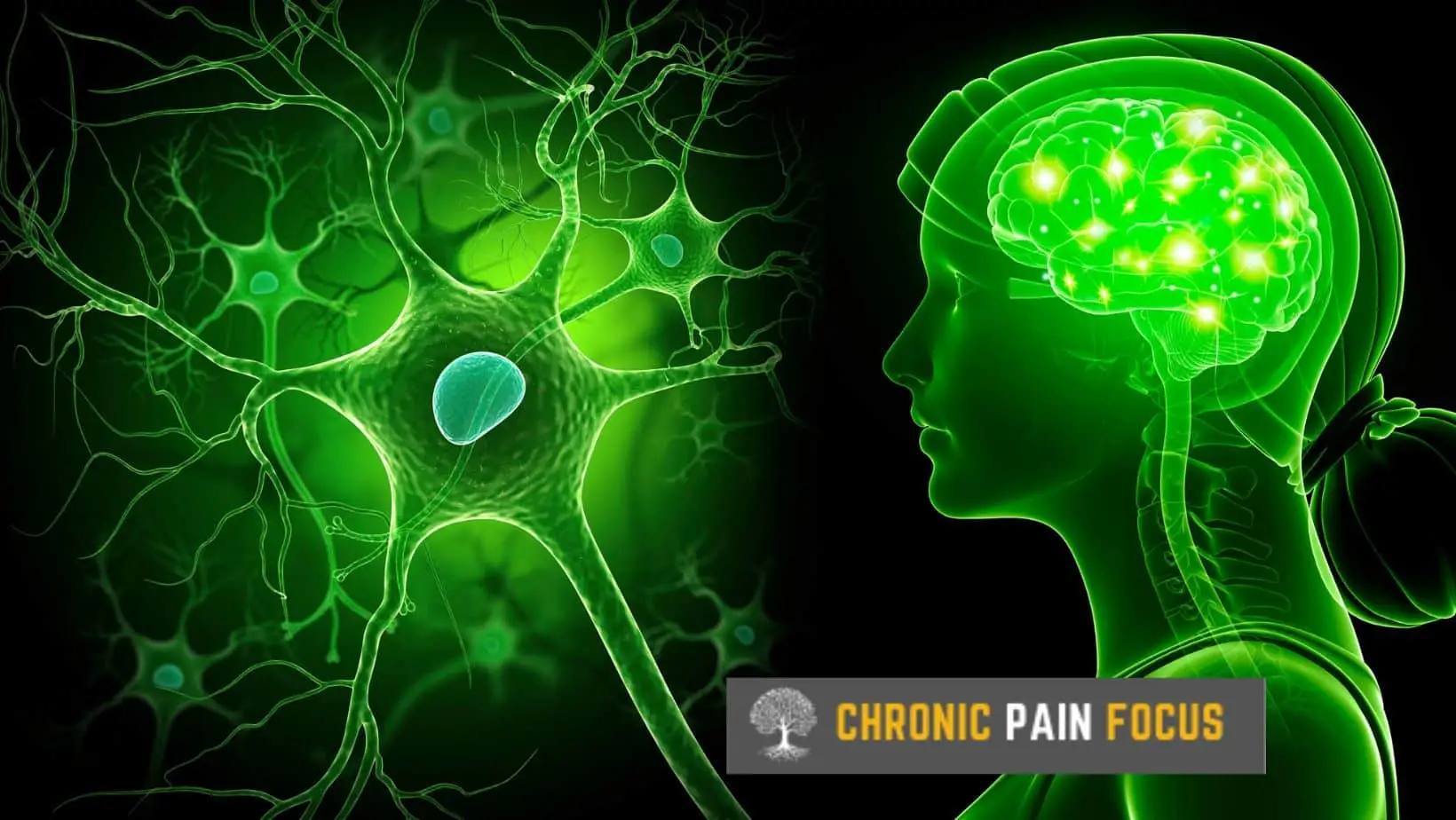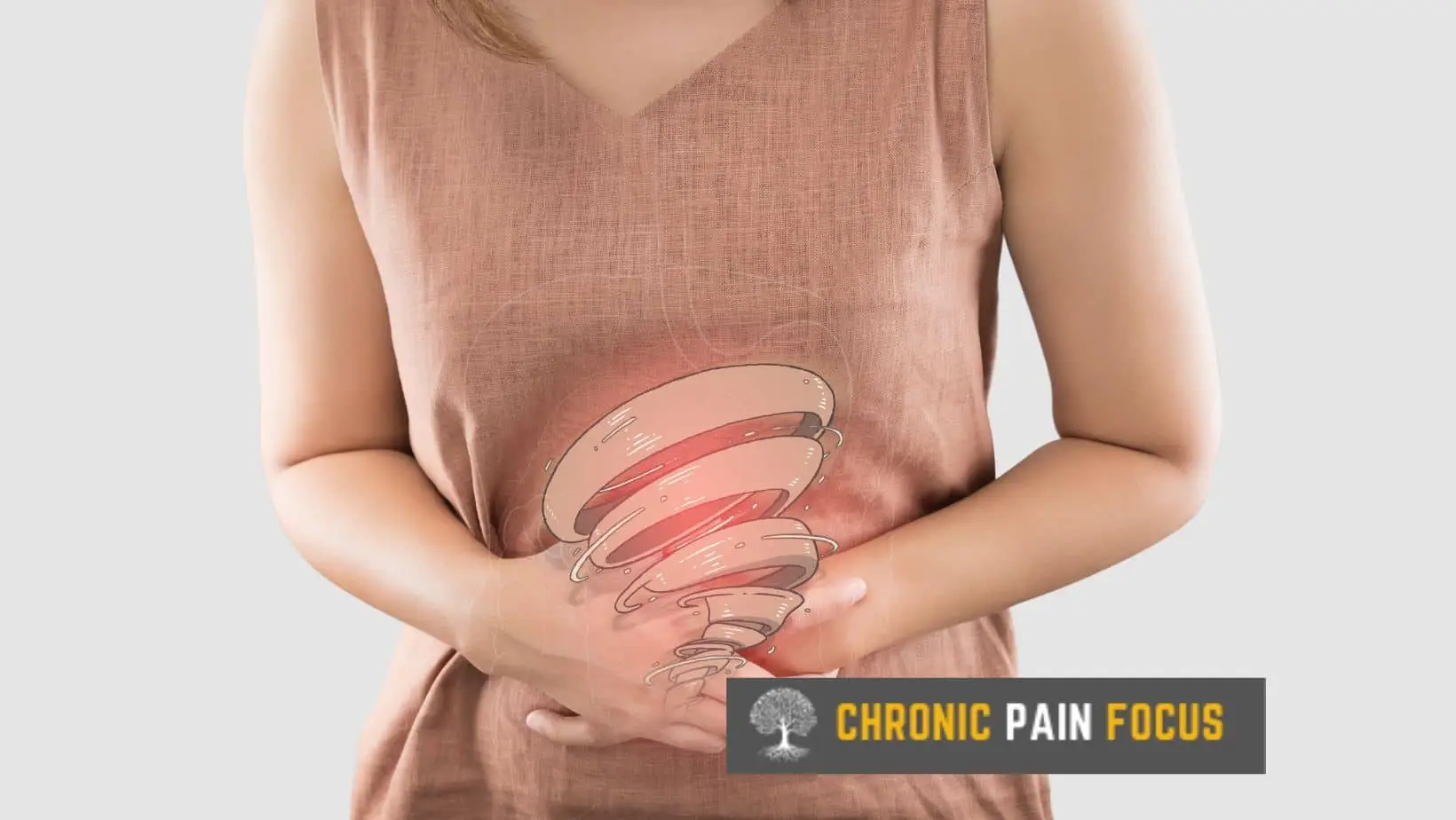
Types of Pain
Pain is a complex and multifaceted experience that can manifest in various forms and intensities. In the medical field, pain is broadly categorised into different types based on its underlying mechanisms, duration, and associated characteristics. This categorisation is crucial for healthcare professionals to accurately diagnose, understand, and develop targeted treatment approaches.
The first major distinction is between acute and chronic pain. Acute pain is typically a normal physiological response to injury or illness, serving as a warning signal to protect the body. In contrast, chronic pain persists beyond the expected healing period, often lasting for months or years, and can become a debilitating condition itself. Further classifications delve into the specific nature of the pain, such as nociceptive pain arising from actual or threatened tissue damage, and neuropathic pain resulting from dysfunction or injury to the nervous system.
Additionally, pain can be characterised as somatic, affecting the musculoskeletal structures, or visceral, originating from internal organs. These classifications provide a framework for medical professionals to navigate the intricate landscape of pain, enabling them to develop comprehensive and personalised pain management strategies tailored to each individual’s unique condition.
Neuropathic Pain: A Comprehensive Overview

Neuropathic pain is a complex and often debilitating condition that arises from damage or dysfunction within the somatosensory nervous system. This type of pain is distinct from nociceptive pain, which results from actual or threatened tissue damage. Neuropathic pain can be challenging to manage and may significantly impact an individual’s quality of life.
Neuropathic pain is caused by various underlying mechanisms, including spontaneous ectopic firing of damaged nerve fibers, sensitisation of pain pathways, and alterations in the central processing of pain signals. These changes can lead to aberrant pain signaling, resulting in symptoms that may not correlate with the degree of nerve injury or damage.
Etiologies Neuropathic pain can arise from a wide range of conditions, including:
- Peripheral neuropathies: Diabetic neuropathy, chemotherapy-induced neuropathy, and other metabolic or toxic neuropathies can lead to neuropathic pain.
- Radiculopathies: Compression or inflammation of spinal nerve roots, such as in cases of herniated discs or spinal stenosis, can cause radicular pain.
- Complex regional pain syndrome (CRPS): This condition, formerly known as reflex sympathetic dystrophy, can develop after an injury or trauma and is characterised by severe, burning pain, swelling, and changes in skin colour and temperature.
- Central nervous system disorders: Conditions like multiple sclerosis, Parkinson’s disease, and spinal cord injuries can result in neuropathic pain due to central nervous system damage or dysfunction.
- Post-surgical pain: Neuropathic pain can occur after certain surgical procedures, such as amputation, thoracotomy, or mastectomy, due to nerve injury or entrapment.
- Trigeminal neuralgia: This condition involves severe, lancinating pain in the distribution of the trigeminal nerve, which innervates the face.
Clinical Presentation The symptoms of neuropathic pain can vary depending on the underlying cause and the specific nerves involved. Common manifestations include burning, shooting, or lancinating pain, as well as numbness, tingling, or electric shock-like sensations. The pain may be constant or intermittent, and it can be exacerbated by certain triggers, such as light touch or temperature changes.
Diagnosing neuropathic pain relies on a thorough medical history, physical examination, and appropriate diagnostic tests. These may include neurological examinations, electrophysiological studies (e.g., nerve conduction studies and electromyography), imaging techniques (e.g., MRI, CT scans), and laboratory tests to identify potential underlying conditions.
The management of neuropathic pain often requires a multidisciplinary approach, combining pharmacological and non-pharmacological interventions.
- Pharmacological treatments:
- Anticonvulsants (e.g., gabapentin, pregabalin)
- Antidepressants (e.g., duloxetine, amitriptyline)
- Topical analgesics (e.g., lidocaine patches)
- Opioid analgesics (for severe, refractory cases)
- Non-pharmacological treatments:
- Physical therapy and exercise
- Cognitive-behavioural therapy
- Transcutaneous electrical nerve stimulation (TENS)
- Neuromodulation techniques (e.g., spinal cord stimulation)
- Interventional pain procedures (e.g., nerve blocks, epidural injections)
It is crucial to tailor the treatment plan to the individual patient’s needs, considering the underlying cause, severity of pain, comorbidities, and potential side effects of the interventions.
Musculoskeletal Pain: A Comprehensive Overview

Musculoskeletal pain is a broad term that encompasses a wide range of conditions affecting the muscles, bones, joints, tendons, ligaments, and other connective tissues. This type of pain is one of the most common reasons individuals seek medical attention, and it can significantly impact quality of life and functional ability.
Etiology and Pathophysiology Musculoskeletal pain can arise from various underlying causes, including:
- Injuries: Acute trauma, such as sprains, strains, fractures, or dislocations, can lead to musculoskeletal pain due to tissue damage and inflammation.
- Degenerative conditions: Osteoarthritis, degenerative disc disease, and other age-related changes in the musculoskeletal system can cause chronic pain and reduced mobility.
- Inflammatory conditions: Rheumatoid arthritis, ankylosing spondylitis, and other autoimmune disorders can result in joint inflammation and associated pain.
- Overuse and repetitive strain: Excessive or improper use of muscles and joints, such as in certain sports or occupations, can lead to overuse injuries and musculoskeletal pain.
- Structural abnormalities: Conditions like scoliosis, kyphosis, or leg length discrepancies can alter biomechanics and contribute to musculoskeletal pain.
- Metabolic disorders: Certain metabolic conditions, such as gout or pseudogout, can cause joint pain and inflammation.
The pathophysiology of musculoskeletal pain involves a complex interplay of various mechanisms, including tissue damage, inflammation, muscle spasms, biomechanical imbalances, and central sensitization of pain pathways.
Clinical Presentation The presentation of musculoskeletal pain can vary depending on the underlying cause and the affected structures. Common symptoms include localised or generalised pain, stiffness, swelling, reduced range of motion, and functional limitations. The pain may be acute or chronic, and it can be exacerbated by certain activities or positions.
Diagnosing musculoskeletal pain involves a comprehensive approach, including:
- Medical history: Obtaining a detailed history of the patient’s symptoms, onset, duration, and potential triggering factors.
- Physical examination: Performing a thorough musculoskeletal examination, assessing range of motion, strength, tenderness, and other relevant findings.
- Imaging studies: Radiographs, magnetic resonance imaging (MRI), computed tomography (CT) scans, or ultrasound may be used to evaluate the affected structures and identify underlying pathologies.
- Laboratory tests: Blood tests, such as inflammatory markers or rheumatoid factor, may be helpful in certain cases to rule out or confirm specific conditions.
The management of musculoskeletal pain typically involves a multidisciplinary approach, combining pharmacological and non-pharmacological interventions:
- Pharmacological treatments:
- Analgesics (e.g., acetaminophen, non-steroidal anti-inflammatory drugs)
- Muscle relaxants
- Corticosteroid injections (for localized inflammation)
- Disease-modifying antirheumatic drugs (for inflammatory conditions)
- Non-pharmacological treatments:
- Physical therapy and exercise rehabilitation
- Occupational therapy and ergonomic modifications
- Bracing or assistive devices
- Therapeutic modalities (e.g., heat, cold, ultrasound)
- Cognitive-behavioural therapy and pain management strategies
- Surgical interventions (e.g., joint replacements, spinal decompression)
The treatment plan should be tailored to the individual patient’s needs, considering the underlying cause, severity of pain, functional limitations, and potential risks and benefits of the interventions.
Preventing musculoskeletal pain involves adopting healthy lifestyle habits, such as maintaining proper posture, engaging in regular exercise, and utilizing ergonomic principles in daily activities. Prompt medical attention and appropriate management of acute injuries or conditions can help prevent chronic musculoskeletal pain and associated complications.
Central Sensitisation Syndromes and Associated Pain

Central sensitisation is a complex neurophysiological phenomenon that plays a crucial role in the development and maintenance of various chronic pain conditions, collectively referred to as central sensitization syndromes. These syndromes are characterized by heightened sensitivity to sensory inputs, resulting in amplified and widespread pain experiences that may not correlate with the degree of initial tissue injury or pathology.
Central sensitisation involves functional and structural changes within the central nervous system (CNS), particularly in the spinal cord and brain. These changes lead to an increased responsiveness of nociceptive neurons to peripheral inputs, as well as alterations in the modulation and processing of pain signals.
The underlying mechanisms of central sensitisation include:
- Neurotransmitter dysregulation: Imbalances in excitatory and inhibitory neurotransmitters, such as glutamate, substance P, and gamma-aminobutyric acid (GABA), contribute to the hyperexcitability of pain pathways.
- Neuroplasticity: Structural and functional reorganisation of neuronal circuits in the CNS can lead to amplified pain processing and the development of persistent pain states.
- Glial cell activation: Microglia and astrocytes, the immune cells of the CNS, can become activated and contribute to the perpetuation of central sensitisation through the release of inflammatory mediators.
- Descending pain modulation: Disruptions in the descending pain modulation pathways from the brain to the spinal cord can impair the ability to suppress or modulate pain signals effectively.
Several chronic pain conditions are thought to involve central sensitisation as a key pathophysiological mechanism. These include:
- Fibromyalgia: A chronic widespread musculoskeletal pain disorder characterised by heightened pain sensitivity, fatigue, and cognitive difficulties.
- Chronic fatigue syndrome: A complex condition involving persistent fatigue, pain, and cognitive impairment, with central sensitisation believed to play a role in symptom perpetuation.
- Irritable bowel syndrome: A functional gastrointestinal disorder associated with abdominal pain, bloating, and altered bowel habits, potentially involving central sensitisation of visceral pain pathways.
- Tension-type headaches and migraines: Recurrent headache disorders characterised by hypersensitivity to sensory stimuli, potentially due to central sensitisation of trigeminal nociceptive pathways.
- Temporomandibular disorders: Chronic pain conditions affecting the jaw muscles and temporomandibular joint, with central sensitisation contributing to the amplification and persistence of pain.
The clinical presentation of central sensitisation syndromes can vary depending on the specific condition but often includes widespread or diffuse pain, hyperalgesia (increased pain sensitivity), allodynia (pain perception from non-painful stimuli), and associated symptoms such as fatigue, cognitive difficulties, and sleep disturbances.
Diagnosis
Diagnosing central sensitisation syndromes can be challenging, as there are no specific diagnostic tests available. The assessment typically involves:
- Comprehensive medical history and physical examination to rule out other potential causes of pain.
- Evaluation of pain characteristics, such as distribution, intensity, and associated symptoms.
- Assessment of functional impairment and impact on quality of life.
- Consideration of diagnostic criteria for specific central sensitization syndromes, when available.
Management
The management of central sensitisation syndromes and associated pain often requires a multidisciplinary approach, combining pharmacological and non-pharmacological interventions:
- Pharmacological treatments:
- Antidepressants (e.g., serotonin-norepinephrine reuptake inhibitors, tricyclic antidepressants)
- Anticonvulsants (e.g., gabapentin, pregabalin)
- Cognitive enhancers (e.g., modafinil)
- Targeted therapies (e.g., N-methyl-D-aspartate receptor antagonists, glial cell inhibitors)
- Non-pharmacological treatments:
- Cognitive-behavioural therapy and pain management strategies
- Exercise and physical therapy
- Mind-body interventions (e.g., mindfulness, meditation, yoga)
- Lifestyle modifications (e.g., stress management, sleep hygiene)
- Complementary and alternative therapies (e.g., acupuncture, massage therapy)
The treatment plan should be tailored to the individual’s needs, considering the specific central sensitization syndrome, symptom severity, comorbidities, and potential side effects of interventions.
While preventing central sensitisation syndromes can be challenging, prompt and appropriate management of acute pain conditions and addressing potential risk factors (e.g., psychological distress, sleep disturbances, physical inactivity) may help mitigate the development of chronic pain and central sensitisation. Early intervention and a multidisciplinary approach are crucial for optimal management and prevention of long-term complications.
Inflammatory Pain

Inflammatory pain is a complex and multifaceted condition that arises as a result of the body’s inflammatory response to tissue injury, infection, or underlying pathological processes. This type of pain plays a crucial role in alerting the individual to potential harm and initiating the healing process. However, when inflammation persists or becomes dysregulated, it can lead to chronic and debilitating pain states.
Inflammatory pain is mediated by a complex interplay of various cellular and molecular mechanisms involving the immune system, peripheral nerves, and central nervous system (CNS). The key processes involved in inflammatory pain include:
- Peripheral sensitization: Tissue injury or inflammation triggers the release of inflammatory mediators, such as prostaglandins, cytokines, and bradykinin, which sensitize peripheral nociceptors (pain receptors) and lower their activation threshold, leading to increased pain sensitivity.
- Neurogenic inflammation: Nociceptors release neuropeptides, such as substance P and calcitonin gene-related peptide (CGRP), which further amplify the inflammatory response and contribute to vasodilation, plasma extravasation, and recruitment of immune cells.
- Central sensitization: Persistent nociceptive input from the periphery can lead to functional and structural changes in the spinal cord and brain, resulting in increased excitability of pain pathways and the development of central sensitization, which amplifies and perpetuates pain perception.
- Modulation of pain pathways: Inflammatory mediators can influence the activity of descending pain modulatory pathways, either facilitating or inhibiting pain transmission at different stages of the inflammatory process.
Etiologies and Clinical Presentation Inflammatory pain can arise from a wide range of conditions, including:
- Rheumatoid arthritis and other autoimmune disorders: Chronic inflammation of joints and tissues can lead to persistent inflammatory pain.
- Osteoarthritis: Degenerative changes in joints can trigger inflammatory processes and associated pain.
- Infections: Bacterial, viral, or fungal infections can induce an inflammatory response, leading to pain and other associated symptoms.
- Tissue injuries: Trauma, burns, or surgical procedures can initiate an inflammatory cascade and result in acute or chronic inflammatory pain.
- Neuropathic conditions: Inflammatory processes can contribute to the development and maintenance of certain neuropathic pain conditions, such as complex regional pain syndrome (CRPS).
The clinical presentation of inflammatory pain can vary depending on the underlying cause and affected tissues. Common symptoms include localized or generalized pain, swelling, redness, warmth, and reduced mobility or function. The pain may be described as throbbing, aching, or burning, and it can be exacerbated by movement or pressure on the affected area.
Diagnosing inflammatory pain involves a comprehensive approach, including:
- Medical history and physical examination: Obtaining a detailed history of the patient’s symptoms, potential triggers, and associated factors, along with a thorough physical examination to assess the affected areas.
- Laboratory tests: Various blood tests, such as inflammatory markers (e.g., C-reactive protein, erythrocyte sedimentation rate), autoantibodies, and others, can aid in identifying underlying inflammatory or autoimmune conditions.
- Imaging studies: Radiographs, magnetic resonance imaging (MRI), or ultrasound may be used to evaluate the affected tissues and identify structural changes or inflammation.
- Diagnostic procedures: In some cases, procedures like joint aspiration or biopsy may be necessary to confirm the presence of inflammation or rule out other potential causes.
The management of inflammatory pain typically involves a multidisciplinary approach, combining pharmacological and non-pharmacological interventions:
- Pharmacological treatments:
- Non-steroidal anti-inflammatory drugs (NSAIDs)
- Corticosteroids (systemic or local injections)
- Disease-modifying antirheumatic drugs (DMARDs) for autoimmune conditions
- Analgesics (acetaminophen, opioids in severe cases)
- Targeted therapies (e.g., biologic agents, anti-cytokine therapies)
- Non-pharmacological treatments:
- Physical therapy and exercise rehabilitation
- Occupational therapy and assistive devices
- Cognitive-behavioral therapy and pain management strategies
- Complementary and alternative therapies (e.g., acupuncture, massage)
- Interventional procedures (e.g., joint injections, nerve blocks)
- Surgical interventions (e.g., joint replacements, synovectomy)
The treatment plan should be tailored to the individual patient’s needs, considering the underlying cause, severity of inflammation and pain, comorbidities, and potential side effects of interventions.
Preventing inflammatory pain often involves addressing the underlying cause and managing risk factors for inflammation. This may include lifestyle modifications (e.g., weight management, exercise, smoking cessation), prompt treatment of infections or injuries, and adherence to prescribed medications for chronic inflammatory conditions. Early intervention and appropriate management of acute inflammatory processes can help prevent the development of chronic pain states and associated complications.
Visceral Pain

Visceral pain is a distinct type of pain that originates from the internal organs of the body, such as the gastrointestinal tract, urinary system, reproductive organs, and thoracic or abdominal viscera. Unlike somatic pain, which arises from musculoskeletal structures and is typically well-localised, visceral pain is often diffuse, poorly localised, and may be accompanied by nausea, vomiting, and autonomic responses.
Visceral pain is mediated by specialised sensory receptors within the visceral organs, called visceral nociceptors. These nociceptors respond to various stimuli, including mechanical distension, ischemia, inflammation, and chemical irritants. The pathways involved in visceral pain transmission are distinct from those mediating somatic pain.
The key mechanisms underlying visceral pain include:
- Visceral afferent pathways: Visceral nociceptive signals are transmitted via specialised afferent fibers that converge onto spinal cord neurons, which also receive input from somatic structures, contributing to the poor localisation of visceral pain.
- Central processing: Visceral pain signals are processed and modulated by various regions of the central nervous system (CNS), including the spinal cord, brainstem, thalamus, and cortical areas, leading to the perception of pain and associated autonomic responses.
- Viscero-visceral and viscero-somatic convergence: Convergence of visceral and somatic afferent inputs onto the same spinal cord neurons can lead to referred pain, where pain originating from visceral organs is perceived in somatic structures.
- Central sensitisation: Persistent or intense visceral nociceptive input can lead to functional and structural changes in the CNS, resulting in central sensitisation and amplification of pain perception.
Etiologies and Clinical Presentation Visceral pain can arise from a wide range of conditions affecting the internal organs, including:
- Gastrointestinal disorders: Inflammatory bowel diseases (e.g., Crohn’s disease, ulcerative colitis), functional gastrointestinal disorders (e.g., irritable bowel syndrome), pancreatitis, and other conditions can lead to visceral pain in the abdominal region.
- Urological and gynecological disorders: Conditions such as kidney stones, endometriosis, dysmenorrhea, and pelvic inflammatory diseases can result in visceral pain in the pelvic region.
- Cardiovascular disorders: Myocardial ischemia, aortic dissection, and other cardiovascular conditions can cause visceral pain in the chest or abdominal regions.
- Respiratory disorders: Conditions like pneumonia, pleurisy, and lung cancer can lead to visceral pain in the thoracic region.
The clinical presentation of visceral pain can vary depending on the affected organ and underlying condition. Common symptoms include diffuse, poorly localized pain, often described as dull, aching, or cramping. Visceral pain may be accompanied by nausea, vomiting, changes in bowel or bladder habits, and autonomic responses such as sweating or tachycardia.
Diagnosing visceral pain involves a comprehensive approach, including:
- Medical history and physical examination: Obtaining a detailed history of the patient’s symptoms, including onset, duration, location, and potential triggers, along with a thorough physical examination to assess for tenderness or other relevant findings.
- Laboratory tests: Various blood tests, stool tests, or urine analyses may be performed to evaluate organ function and identify potential underlying conditions.
- Imaging studies: Techniques such as CT scans, MRI, endoscopy, or ultrasound may be used to visualize internal organs and identify structural abnormalities or pathologies.
- Functional tests: Procedures like gastric emptying studies, urodynamic testing, or cardiac stress tests may be employed to assess organ function and diagnose specific conditions.
The management of visceral pain typically involves a multidisciplinary approach, combining pharmacological and non-pharmacological interventions:
- Pharmacological treatments:
- Analgesics (e.g., non-steroidal anti-inflammatory drugs, opioids for severe pain)
- Antispasmodics and anticholinergics (for visceral pain related to smooth muscle spasms)
- Antidepressants and anticonvulsants (for neuropathic components of visceral pain)
- Targeted therapies (e.g., antibiotics, immunosuppressants) for underlying conditions
- Non-pharmacological treatments:
- Dietary modifications and lifestyle changes
- Cognitive-behavioral therapy and pain management strategies
- Complementary and alternative therapies (e.g., acupuncture, hypnotherapy)
- Interventional procedures (e.g., nerve blocks, neuromodulation)
- Surgical interventions (e.g., resection, organ transplantation) in severe cases
The treatment plan should be tailored to the individual patient’s needs, considering the underlying cause, severity of pain, comorbidities, and potential side effects of interventions.
Prevention and Management Preventing visceral pain often involves early identification and appropriate management of underlying conditions affecting the internal organs. This may include lifestyle modifications, adherence to prescribed medications, and regular follow-up with healthcare providers. Prompt treatment of acute conditions can help prevent the development of chronic visceral pain syndromes and associated complications.
Somatic Pain

Somatic pain is a type of pain that arises from the stimulation of specialised pain receptors in musculoskeletal structures, such as bones, joints, muscles, and connective tissues. This type of pain is typically well-localized and often described as aching, throbbing, or sharp in nature. Somatic pain serves as a protective mechanism, alerting the individual to potential or actual tissue damage and promoting appropriate healing responses.
Somatic pain is mediated by specialized sensory receptors called nociceptors, which are present in various somatic structures throughout the body. These nociceptors are sensitive to a wide range of stimuli, including mechanical, thermal, and chemical insults. The key mechanisms involved in somatic pain transmission include:
- Peripheral nociceptor activation: Nociceptors in somatic structures are activated by various noxious stimuli, leading to the generation of action potentials that are transmitted along peripheral nerve fibers.
- Spinal cord processing: Nociceptive signals from somatic structures are transmitted to the dorsal horn of the spinal cord, where they are modulated and processed by a complex network of excitatory and inhibitory interneurons.
- Ascending pathways: The processed nociceptive information is then transmitted along the spinothalamic tract and other ascending pathways to higher brain regions, including the thalamus, somatosensory cortex, and limbic system, where the pain experience is consciously perceived and modulated.
- Descending modulation: The perception and modulation of somatic pain are influenced by descending pathways from the brain, which can facilitate or inhibit pain transmission at various levels of the nervous system.
Etiologies and Clinical Presentation Somatic pain can arise from a wide range of conditions affecting musculoskeletal structures, including:
- Acute injuries: Fractures, sprains, strains, and other traumatic injuries can lead to somatic pain due to tissue damage and inflammation.
- Degenerative conditions: Osteoarthritis, degenerative disc diseases, and other age-related changes in musculoskeletal structures can cause chronic somatic pain.
- Inflammatory conditions: Rheumatoid arthritis, ankylosing spondylitis, and other autoimmune disorders can result in inflammation of musculoskeletal tissues, leading to somatic pain.
- Myofascial pain syndromes: Conditions like fibromyalgia, myofascial trigger points, and tension-type headaches involve somatic pain originating from muscles and fascia.
- Neuropathic pain: Certain neuropathic pain conditions, such as radiculopathies and complex regional pain syndrome (CRPS), can involve a somatic pain component.
The clinical presentation of somatic pain varies depending on the affected structure and underlying condition. Common symptoms include localized pain, tenderness, swelling, and reduced range of motion or function. The pain may be exacerbated by movement, pressure, or weight-bearing activities.
Diagnosing somatic pain involves a comprehensive approach, including:
- Medical history and physical examination: Obtaining a detailed history of the patient’s symptoms, including onset, duration, location, and potential triggers, along with a thorough musculoskeletal examination to assess for tenderness, swelling, or other relevant findings.
- Imaging studies: Techniques such as X-rays, MRI, CT scans, or ultrasound may be used to evaluate musculoskeletal structures and identify potential underlying pathologies.
- Laboratory tests: In certain cases, blood tests or other laboratory investigations may be performed to rule out or confirm specific conditions contributing to somatic pain.
- Diagnostic injections: Procedures like joint injections or nerve blocks may be employed to confirm the source of pain and guide treatment decisions.
The management of somatic pain typically involves a multidisciplinary approach, combining pharmacological and non-pharmacological interventions:
- Pharmacological treatments:
- Analgesics (e.g., acetaminophen, non-steroidal anti-inflammatory drugs, opioids for severe pain)
- Muscle relaxants
- Corticosteroid injections (for localized inflammation)
- Disease-modifying antirheumatic drugs (DMARDs) for inflammatory conditions
- Non-pharmacological treatments:
- Physical therapy and exercise rehabilitation
- Occupational therapy and ergonomic modifications
- Bracing or assistive devices
- Cognitive-behavioural therapy and pain management strategies
- Complementary and alternative therapies (e.g., massage, acupuncture)
- Interventional procedures (e.g., joint injections, nerve blocks)
- Surgical interventions (e.g., joint replacements, spinal decompression)
The treatment plan should be tailored to the individual patient’s needs, considering the underlying cause, severity of pain, functional limitations, and potential risks and benefits of the interventions.
Preventing somatic pain often involves addressing underlying risk factors and adopting preventive measures. This may include maintaining a healthy lifestyle, practicing proper body mechanics and ergonomics, and promptly seeking medical attention for acute injuries or musculoskeletal conditions. Early intervention and appropriate management of acute somatic pain can help prevent the development of chronic pain states and associated complications.
Nociceptive Pain

Nociceptive pain is a type of pain that arises from the activation of specialised sensory receptors called nociceptors, which are located in various tissues throughout the body. These receptors are designed to detect and respond to noxious stimuli, such as mechanical, thermal, or chemical insults, that have the potential to cause tissue damage. Nociceptive pain serves as a protective mechanism, alerting the individual to potential harm and promoting appropriate behavioural responses to minimize further injury.
Nociceptive pain is mediated by a complex interplay of peripheral and central mechanisms, involving the following key processes:
- Peripheral nociceptor activation: Nociceptors are activated by various noxious stimuli, including mechanical forces (e.g., pressure, stretching, tearing), extreme temperatures (heat or cold), and chemical irritants (e.g., inflammatory mediators, toxins). This activation triggers the generation of action potentials in the nociceptor terminals.
- Peripheral sensitisation: Tissue injury or inflammation can lead to the release of various inflammatory mediators, such as prostaglandins, bradykinin, and cytokines. These substances can lower the activation threshold of nociceptors, resulting in increased sensitivity to noxious stimuli (peripheral sensitization).
- Transmission of nociceptive signals: The action potentials generated by nociceptors are transmitted along peripheral nerve fibers to the dorsal horn of the spinal cord, where they synapse with second-order neurons.
- Central processing and modulation: Within the spinal cord and brain, nociceptive signals are processed and modulated by a complex network of excitatory and inhibitory interneurons, descending pathways, and various neurotransmitters and neuromodulators.
- Conscious perception of pain: The processed nociceptive information is transmitted to higher brain regions, such as the thalamus, somatosensory cortex, and limbic system, where the pain experience is consciously perceived and modulated by cognitive, emotional, and environmental factors.
Etiologies and Clinical Presentation Nociceptive pain can arise from a wide range of conditions and injuries affecting various tissues and organs, including:
- Somatic nociceptive pain: Originating from musculoskeletal structures, such as bones, joints, muscles, and connective tissues (e.g., fractures, sprains, arthritis).
- Visceral nociceptive pain: Arising from internal organs, such as the gastrointestinal tract, urinary system, or reproductive organs (e.g., appendicitis, kidney stones, dysmenorrhea).
- Cutaneous nociceptive pain: Resulting from injuries or insults to the skin, such as burns, lacerations, or sunburn.
The clinical presentation of nociceptive pain can vary depending on the underlying cause and affected tissues. Common symptoms include localized or referred pain, tenderness, swelling, and functional limitations. The pain may be described as aching, throbbing, sharp, or burning in nature, and it can be exacerbated by movement, pressure, or specific activities.
Diagnosing nociceptive pain involves a comprehensive approach, including:
- Medical history and physical examination: Obtaining a detailed history of the patient’s symptoms, potential triggers, and associated factors, along with a thorough physical examination to assess for tenderness, swelling, or other relevant findings.
- Imaging studies: Techniques such as X-rays, MRI, CT scans, or ultrasound may be used to evaluate the affected tissues and identify potential underlying pathologies or injuries.
- Laboratory tests: In certain cases, blood tests, urine analyses, or other laboratory investigations may be performed to rule out or confirm specific conditions contributing to nociceptive pain.
- Diagnostic interventions: Procedures like nerve blocks or diagnostic injections may be employed to confirm the source of pain and guide treatment decisions.
The management of nociceptive pain typically involves a multidisciplinary approach, combining pharmacological and non-pharmacological interventions:
- Pharmacological treatments:
- Analgesics (e.g., acetaminophen, non-steroidal anti-inflammatory drugs, opioids for severe pain)
- Adjuvant medications (e.g., anticonvulsants, antidepressants) for specific pain conditions
- Targeted therapies (e.g., corticosteroids, disease-modifying antirheumatic drugs) for underlying conditions
- Non-pharmacological treatments:
- Physical therapy and exercise rehabilitation
- Occupational therapy and ergonomic modifications
- Bracing or assistive devices
- Cognitive-behavioural therapy and pain management strategies
- Complementary and alternative therapies (e.g., acupuncture, massage)
- Interventional procedures (e.g., nerve blocks, joint injections)
- Surgical interventions (e.g., joint replacements, decompression procedures)
The treatment plan should be tailored to the individual patient’s needs, considering the underlying cause, severity of pain, functional limitations, and potential risks and benefits of the interventions.
Preventing nociceptive pain often involves addressing underlying risk factors and promptly treating acute injuries or conditions that could lead to tissue damage. This may include adopting appropriate safety measures, maintaining a healthy lifestyle, and promptly seeking medical attention when necessary. Early intervention and effective management of acute nociceptive pain can help prevent the development of chronic pain states and associated complications
Psychogenic Pain

Psychogenic pain, also known as somatoform pain disorder or pain disorder associated with psychological factors, is a complex condition in which the experience of pain cannot be fully explained by an identifiable physiological or structural cause. This type of pain is believed to originate from psychological factors, such as emotional distress, trauma, or maladaptive coping mechanisms. Psychogenic pain can be a challenging condition to diagnose and manage, as it involves the intricate interplay between biological, psychological, and social factors.
While the precise mechanisms underlying psychogenic pain are not fully understood, several theories have been proposed to explain its development and maintenance:
- Cognitive-behavioural model: This model suggests that psychogenic pain is influenced by maladaptive thought patterns, beliefs, and behaviours that can amplify and perpetuate the pain experience.
- Neuroplasticity and central sensitisation: Persistent psychological stress and emotional distress can lead to functional and structural changes in the central nervous system, resulting in altered pain processing and central sensitisation.
- Psychological factors: Certain psychological factors, such as depression, anxiety, trauma, and somatisation (the tendency to experience psychological distress as physical symptoms), have been associated with an increased risk of developing psychogenic pain.
- Stress-induced alterations: Chronic stress can lead to dysregulation of the hypothalamic-pituitary-adrenal (HPA) axis and autonomic nervous system, potentially contributing to the development and maintenance of psychogenic pain.
Etiologies and Clinical Presentation Psychogenic pain can manifest in various forms and may be associated with a wide range of underlying psychological factors, including:
- Trauma and post-traumatic stress disorder (PTSD): Individuals who have experienced traumatic events, such as physical or emotional abuse, may develop psychogenic pain as a manifestation of their psychological distress.
- Somatization disorders: In these conditions, individuals tend to experience and communicate psychological distress through physical symptoms, including pain.
- Depression and anxiety disorders: Mood and anxiety disorders have been linked to an increased risk of developing psychogenic pain, potentially due to altered pain processing and cognitive-behavioural factors.
- Chronic stress and adjustment disorders: Persistent stress, whether related to personal, occupational, or other life circumstances, can contribute to the development of psychogenic pain.
The clinical presentation of psychogenic pain can vary widely, as it may mimic or overlap with other pain conditions. Common symptoms include diffuse or non-anatomical pain patterns, pain that is inconsistent with physical findings, and exacerbation or alleviation of pain in response to emotional factors or environmental cues.
Diagnosing psychogenic pain can be challenging, as it often requires ruling out other potential causes of pain. The diagnostic process typically involves:
- Comprehensive medical history and physical examination: Obtaining a detailed history of the patient’s symptoms, psychological factors, and potential triggering events, along with a thorough physical examination to assess for any identifiable physiological or structural causes of pain.
- Diagnostic testing: Various diagnostic tests, such as imaging studies, laboratory tests, and neurological examinations, may be conducted to rule out other potential causes of pain.
- Psychological evaluation: A comprehensive psychological assessment, including interviews and standardized questionnaires, may be employed to evaluate the presence of psychological factors contributing to the pain experience.
- Diagnostic criteria: The diagnosis of psychogenic pain is typically made based on established diagnostic criteria, such as those outlined in the Diagnostic and Statistical Manual of Mental Disorders (DSM) or the International Classification of Diseases (ICD).
The management of psychogenic pain often requires a multidisciplinary approach, involving both psychological and medical interventions:
- Psychological interventions:
- Cognitive-behavioural therapy (CBT): This therapy aims to modify maladaptive thought patterns, beliefs, and behaviours associated with pain.
- Acceptance and commitment therapy (ACT): This approach focuses on developing psychological flexibility and promoting values-based living despite pain.
- Mindfulness-based interventions: Mindfulness practices can help individuals better cope with pain and reduce associated psychological distress.
- Psychotherapy: Various forms of psychotherapy, such as psychodynamic therapy or interpersonal therapy, may be beneficial in addressing underlying psychological factors contributing to the pain experience.
- Pharmacological treatments:
- Antidepressants: Certain antidepressants, such as selective serotonin reuptake inhibitors (SSRIs) or serotonin-norepinephrine reuptake inhibitors (SNRIs), may be helpful in managing psychogenic pain, particularly when associated with mood disorders.
- Anxiolytics: Medications that reduce anxiety, such as benzodiazepines or buspirone, may be used in the short term to alleviate anxiety-related pain exacerbations.
- Adjuvant medications: Other medications, such as anticonvulsants or muscle relaxants, may be prescribed as adjunctive therapies depending on the individual case.
- Multidisciplinary approach:
- Physical therapy and exercise: Tailored physical therapy and exercise programs can help improve physical function and promote overall well-being.
- Occupational therapy: Occupational therapists can assist in developing strategies for managing daily activities and improving quality of life.
- Support groups and psychoeducation: Participation in support groups and access to educational resources can empower individuals with psychogenic pain and promote better self-management strategies.
The treatment plan should be individualized and tailored to the specific needs and circumstances of each patient, addressing both the psychological and physical aspects of their condition.
Prevention and Management While preventing psychogenic pain can be challenging, addressing underlying psychological factors and promoting healthy coping mechanisms may help reduce the risk of developing this condition. Early intervention and appropriate management of psychological distress, trauma, and stress-related disorders are essential in preventing the development of psychogenic pain. Additionally, promoting awareness and education about the mind-body connection and the influence of psychological factors on pain perception can aid in prevention and early recognition of psychogenic pain.